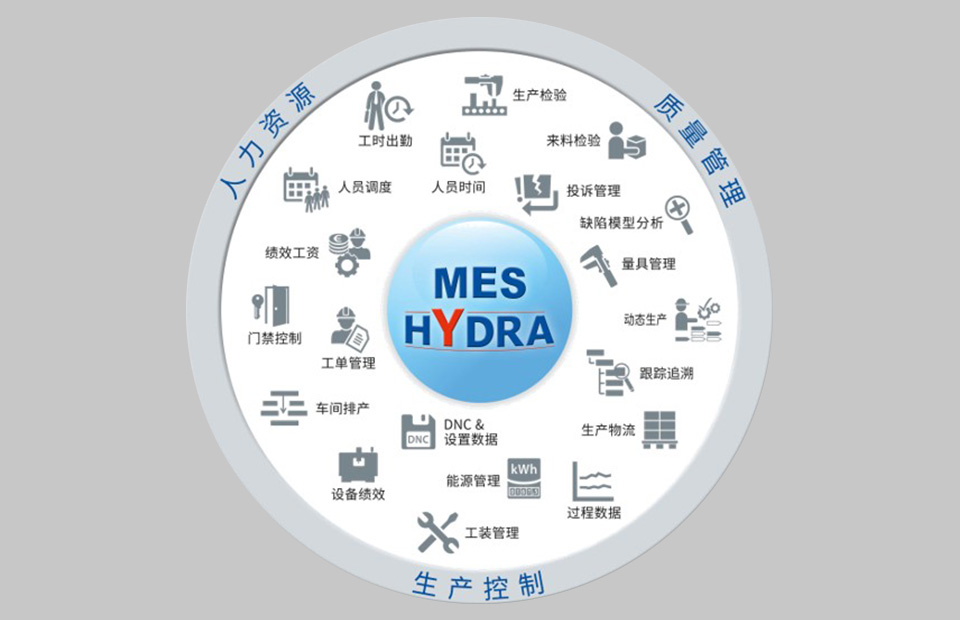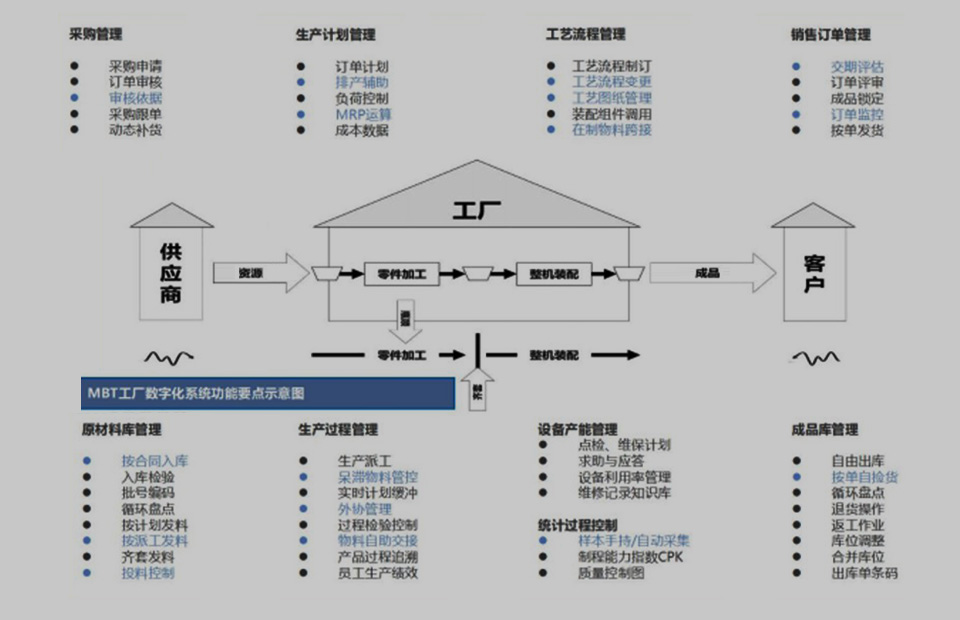MES Introduce
To achieve the strategic objectives of digitalization, networking, and intelligent upgrading of enterprise equipment, and to meet the requirements of customers and related parties, a digital equipment management platform is planned, established, and implemented. This platform serves enterprise production while enhancing OEE (Overall Equipment Effectiveness), elevating equipment management standards, optimizing spare parts inventory, and facilitating the accumulation, reuse, and application of maintenance knowledge and experience. Ultimately, it realizes the digital management of equipment reliability, maintainability, and economics throughout its lifecycle. A comprehensive digital equipment management platform is established to achieve a complete closed loop of equipment data collection, analysis, and application. This includes:
1、Unified Equipment Management Application Platform
Leveraging a private cloud platform and a microservices architecture, it enables low-cost, rapid sharing of equipment information across production, equipment, quality, procurement, and finance departments. It achieves unified aggregation, storage, analysis, and application of big data on equipment assets, driving the company's equipment management towards digitalization, networking, and intelligence.
2、Unified Business Operations and Performance Evaluation
Equipment assets represent core financial investment costs, and key evaluation indicators can indirectly reflect internal rates of return on investment, effectively supporting corporate-level decisions on equipment asset investments. Additionally, equipment indicator data objectively reflects the condition and rationality of maintenance strategies, providing reliable data support for lean operations.
3、Unified Equipment Management System and Accumulation, Reuse of Data, Knowledge, and Experience
In traditional equipment management models, vast amounts of data on the full lifecycle value of equipment become isolated islands, with a lack of interoperability between machines and between humans and machines, resulting in decision-making devoid of big data support. Furthermore, valuable expert knowledge and experience are not accumulated, hindering the interconnection between individuals, leading to high personnel training costs and substantial losses due to personnel turnover. This project consolidates and reuses the company's intellectual wealth, making equipment management more rational, standardized, and normalized.
4、Data-Driven Optimization and Upgrading of Equipment Management
It enables intelligent maintenance strategies based on equipment health status, as well as supporting decisions on overhauls, modifications, upgrades, and replacements. Replacing traditional intuitive judgments with data, it precisely assesses the allocation of maintenance resources and effectively controls overall equipment operation and maintenance costs.
5、Data-Driven Optimization and Upgrading of Spare Parts Management
It realizes full traceability of data based on production output and remaining lifespan of spare parts. By integrating consumption, inventory, and procurement data, it automatically coordinates spare parts procurement plans, reducing waiting times while minimizing the capital tied up in spare parts inventory.
Helping customers identify and address pain points in their production processes.




